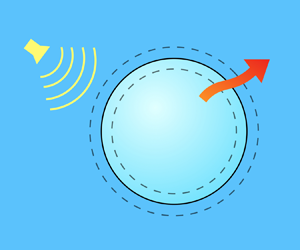Crossref Citations
This article has been cited by the following publications. This list is generated based on data provided by
Crossref.
KAGAMI, Shunsuke
and
KANAGAWA, Tetsuya
2021.
Derivation of Weakly Nonlinear Wave Equation for Focused Ultrasound in Bubbly Liquids Incorporating a Thermal Effect.
JAPANESE JOURNAL OF MULTIPHASE FLOW,
Vol. 35,
Issue. 2,
p.
346.
Kagami, Shunsuke
and
Kanagawa, Tetsuya
2021.
Weakly Nonlinear Propagation of Focused Ultrasound in Bubbly Liquids: Derivation of 2D and 3D Physico-Mathematical Models.
SSRN Electronic Journal ,
Kamei, Takafumi
Kanagawa, Tetsuya
and
Ayukai, Takahiro
2021.
An exhaustive theoretical analysis of thermal effect inside bubbles for weakly nonlinear pressure waves in bubbly liquids.
Physics of Fluids,
Vol. 33,
Issue. 5,
Zhou, Guangzhao
2021.
Modeling the thermal behavior of an acoustically driven gas bubble.
The Journal of the Acoustical Society of America,
Vol. 149,
Issue. 2,
p.
923.
Sarath, Raj
and
Jayakumar, J.S.
2022.
Analysis of bubble dynamics and thermal destratification induced by gas bubbles in cylindrical liquid storage tanks.
Thermal Science and Engineering Progress,
Vol. 36,
Issue. ,
p.
101481.
Kanagawa, Tetsuya
Ishitsuka, Reona
Arai, Shuya
and
Ayukai, Takahiro
2022.
Contribution of initial bubble radius distribution to weakly nonlinear waves with a long wavelength in bubbly liquids.
Physics of Fluids,
Vol. 34,
Issue. 10,
Kalmár, Csanád
Turányi, Tamás
Zsély, István Gy.
Papp, Máté
and
Hegedűs, Ferenc
2022.
The importance of chemical mechanisms in sonochemical modelling.
Ultrasonics Sonochemistry,
Vol. 83,
Issue. ,
p.
105925.
Dolev, Amit
Kaynak, Murat
and
Sakar, Mahmut Selman
2022.
Dynamics of entrapped microbubbles with multiple openings.
Physics of Fluids,
Vol. 34,
Issue. 1,
Kagami, Shunsuke
and
Kanagawa, Tetsuya
2022.
Weakly nonlinear propagation of focused ultrasound in bubbly liquids with a thermal effect: Derivation of two cases of Khokolov–Zabolotskaya–Kuznetsoz equations.
Ultrasonics Sonochemistry,
Vol. 88,
Issue. ,
p.
105911.
Gluzman, Igal
and
Thomas, Flint O.
2022.
Characterization of bubble dynamics in the nozzle flow of aviation fuels via computer vision tools.
International Journal of Multiphase Flow,
Vol. 154,
Issue. ,
p.
104133.
Brini, F.
and
Seccia, L.
2022.
Acceleration waves and oscillating gas bubbles modelled by rational extended thermodynamics.
Proceedings of the Royal Society A: Mathematical, Physical and Engineering Sciences,
Vol. 478,
Issue. 2267,
Tian, Lei
Zhang, Yongxue
Yin, Jianyong
Lv, Liang
and
Zhu, Jianjun
2022.
A simplified model for the gas-vapor bubble dynamics.
The Journal of the Acoustical Society of America,
Vol. 152,
Issue. 4,
p.
2117.
Delale, Can F.
and
Pasinlioğlu, Şenay
2023.
On the gas pressure inside cavitation bubbles.
Physics of Fluids,
Vol. 35,
Issue. 2,
Sojahrood, A.J.
Li, Q.
Haghi, H.
Karshafian, R.
Porter, T.M.
and
Kolios, M.C.
2023.
Probing the pressure dependence of sound speed and attenuation in bubbly media: Experimental observations, a theoretical model and numerical calculations.
Ultrasonics Sonochemistry,
Vol. 95,
Issue. ,
p.
106319.
Saade, Youssef
Lohse, Detlef
and
Fuster, Daniel
2023.
A multigrid solver for the coupled pressure-temperature equations in an all-Mach solver with VoF.
Journal of Computational Physics,
Vol. 476,
Issue. ,
p.
111865.
Kagami, Shunsuke
and
Kanagawa, Tetsuya
2023.
Weakly nonlinear focused ultrasound in viscoelastic media containing multiple bubbles.
Ultrasonics Sonochemistry,
Vol. 97,
Issue. ,
p.
106455.
Sangtam, Bongliba T.
and
Park, Hanwook
2023.
Review on Bubble Dynamics in Proton Exchange Membrane Water Electrolysis: Towards Optimal Green Hydrogen Yield.
Micromachines,
Vol. 14,
Issue. 12,
p.
2234.
Lai, Chen-Chih
and
Weinstein, Michael I.
2023.
Free Boundary Problem for a Gas Bubble in a Liquid, and Exponential Stability of the Manifold of Spherically Symmetric Equilibria.
Archive for Rational Mechanics and Analysis,
Vol. 247,
Issue. 5,
Waldo, G. V.
2024.
Maximum entropy model of chaotic explosion and implosion of a large gas bubble in liquid.
Physics of Fluids,
Vol. 36,
Issue. 2,
Lai, Chen-Chih
and
Weinstein, Michael I.
2024.
Thermal relaxation toward equilibrium and periodically pulsating spherical bubbles in an incompressible liquid.
Nonlinear Analysis,
Vol. 238,
Issue. ,
p.
113397.





